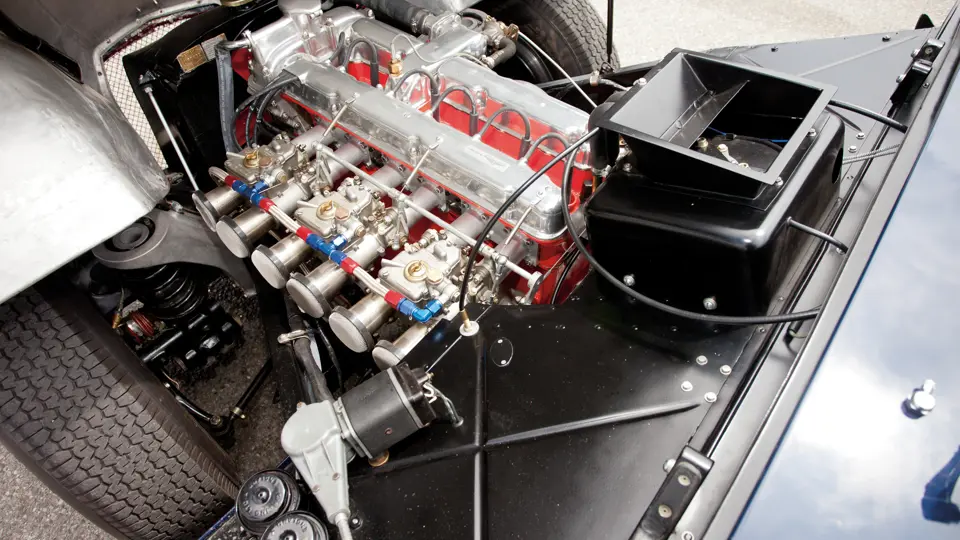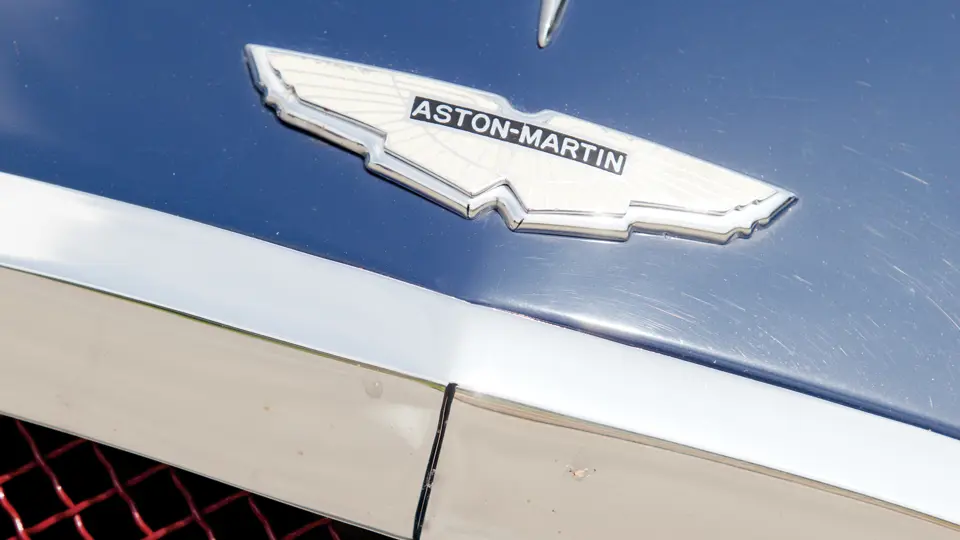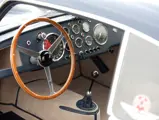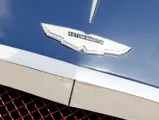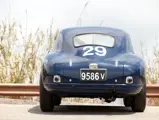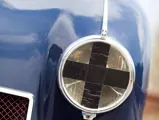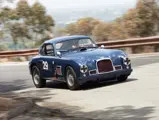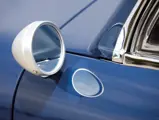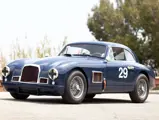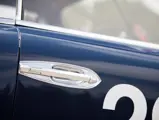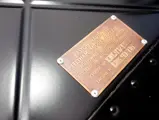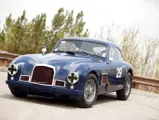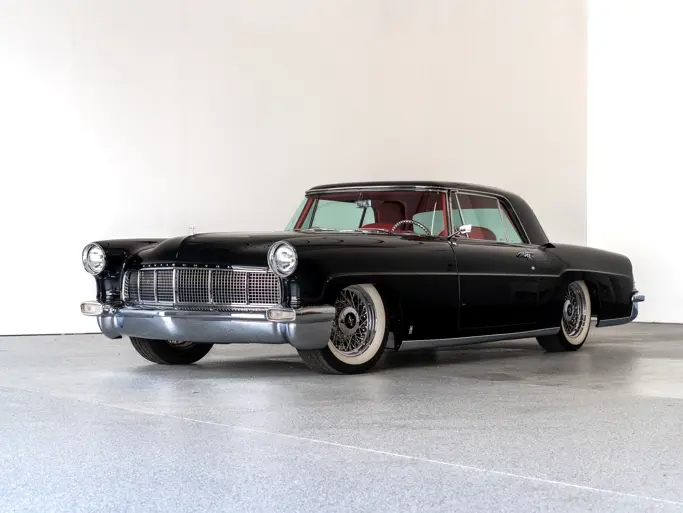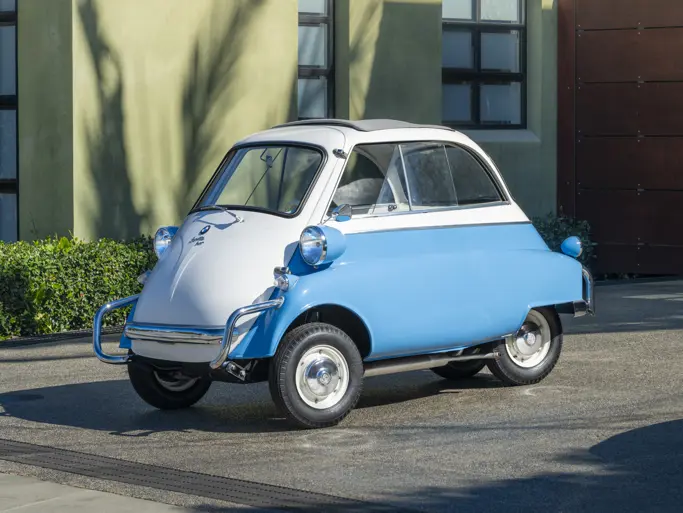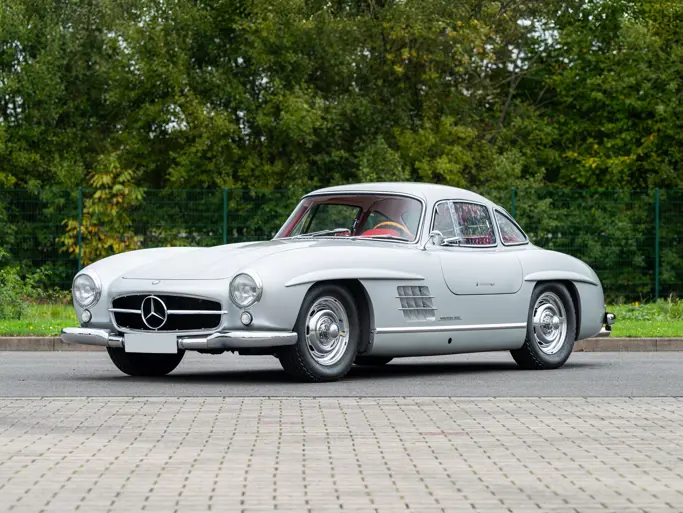200+ bhp, DOHC 2,922 cc inline six-cylinder engine with triple Weber 35 DCOE carburetors, David Brown four-speed manual gearbox, independent front suspension with trailing link, coil springs and Armstrong lever dampers, live Salisbury 4H rear axle with coil springs, and four-wheel hydraulic Alfin drum brakes. Wheelbase: 99.25"
• The thirteenth DB2 produced; one of 50 triple grille “washboard” examples built
• Part of Briggs Cunningham’s 1950 three-car entry at Sebring
• Expert restoration by marque specialists Steel Wings
• Complete with FIA HTP passport
Aston Martin’s Postwar Ascendancy – The Glorious David Brown Era
Following the close of WWII, Aston Martin faced its third major financial crisis when a lack of capital prevented the development of new and necessary postwar models. A cryptic advertisement in The Times caught successful industrialist David Brown’s eye, and by February 1947, a mere £20,500 was required for him to gain ownership of the firm. A few months later, another shrewd acquisition netted Brown to the Lagonda Company, which provided a modern 2,580 cc twin-overhead cam engine. In various forms, this basic engine design would continue through 1959, powering Aston Martin’s DB2, DB2/4, and DB Mark III road cars, as well as the DB3 and DB3S sports racers.
While these developments satisfied Brown the businessman, the racer inside nurtured the dream of scoring outright victory at the ultimate endurance competition, the storied 24 Hours of Le Mans. Under the leadership of legendary team manager John Wyer and newly-hired drivers, including Jack Fairman, George Abecassis, Lance Macklin, and Reg Parnell, racing began in earnest with the prototype DB2 models of 1949. One of these, LML/49/3, earned a Le Mans class podium finish. This promising start was followed by a trio of DB2s, LML/50/7, 50/8, and 50/9, who were entered in 1950 and two earned class awards. These were followed by the introduction of the DB3 and 3S competition cars, which moved the needle forward from 1952 through 1956. David Brown’s racing aspirations and his Works team efforts culminated in 1959, when the DBR1, driven by Roy Salvadori and Carroll Shelby, won Le Mans outright. That same year, the World Sports Car Championship also fell to Aston Martin, with additional help from the likes of such legendary drivers as Stirling Moss, Jack Fairman, and Tony Brooks.
The hugely successful DB4, DB5, and DB6 Grand Tourers, powered by a new alloy twin-cam six, followed in the 1959 to 1969 period. A new V-8 engine debuted in 1969 as the DBS V-8, versions of this alloy masterpiece powering post-David Brown era Astons for a further two decades. Knighted in 1968, Sir David Brown’s 25-year stewardship produced, without a doubt, the most varied and universally revered range of Aston Martin motor cars. They all owe their very existence to the landmark DB2.
The Aston Martin DB2 – The Start of Great Things
The DB2, in series production from May 1950 until April 1953, was David Brown’s first Aston Martin Sporting Saloon. Its tubular-steel chassis was based on that of the prior two-liter sports model, but newly-hired engineer Ted Cutting shortened the wheelbase, added cruciform frame members, triangulation, and an extra upper side-rail, providing, in essence, a stiff tubular space-frame. Its four-wheel coil spring suspension was advanced and not found on a Jaguar or Ferrari for at least a decade. The front was independent and the live rear-axle was located by trailing arms and a Panhard rod. A Salisbury hypoid rear axle was fitted, and the 12-inch hydraulic drum brakes were often equipped with optional Alfin aluminum drums for competition use.
The DB2 production engine “borrowed” from Lagonda was the 2.6-liter twin-cam six designed by W.O. Bentley in 1943, while talented ex-Lagonda designer Frank Feeley penned the handsome coupe bodywork. Engine output was governed by the various available options but ranged from 105 horsepower to 145 horsepower at 5,000 rpm, and provided a zero-to-sixty time of about 12 seconds, and a top speed of 110 to 135 miles per hour. The four-speed gearbox was sourced in-house from the David Brown Gear Division.
As England’s motoring guru of the time, Laurence Pomeroy so eloquently stated in his October 1950 article in The Motor, “It would appear that every so often the gods pass over some works or another and with an inclination of the head inspire the production of a car with outstanding virtues. The Aston Martin DB2 stands worthy in the pedigree of real motor cars stretching back through the 4 ½ Bentley to the 30/98 Vauxhall.”
LML/50/13
The 1950 DB2 offered here, chassis LML/50/13, is simply fascinating in every respect. As one of the first 50 examples produced, the 13th to be exact, it is instantly recognizable to marque enthusiasts due to the “washboard” ribbed side vents in their bonnets. These first 50 cars additionally carried a distinctive three-piece grille design, yet another unique early characteristic.
LML/50/13 was the first DB2 delivered to Canada. Captivated by North America’s postwar enthusiasm for sports car racing, legendary sportsman Briggs Cunningham fielded a ragtag “team” of three new Aston Martin DB2s at the December 1950 Sam Collier Memorial Grand Prix at Sebring, the former USAF airbase in Florida. This DB2, LML/50/13, formed part of Cunningham’s équipe, and it was driven from Toronto to Sebring in wintry conditions for the six-hour endurance race, whereupon it finished Fourth in Class and was awarded the Adele Chinetti Cup for Most Sporting Effort. The event review, including two photographs of LML/50/13, appeared in the March 1951 issue of Road & Track and it is also documented in Joel Finn's book Road Racing in America. In 1952, this DB2’s engine was converted to Vantage specification, according to official notes appended to the factory build sheet. This period upgrade included fitment of triple Weber twin-choke carburetors, and the car is believed to be the first non-Works Aston Martin to be so equipped.
Once back in Canada, LML/50/13 remained active in competition, taking a First Place Overall at Edenvale, Ontario in 1952, after which it is known to have raced regularly throughout the 1950s, until its eventual retirement by 1960. Discovered in “barn find” condition by noted Canadian vintage-racer and former Aston Martin Owners Club NA-Section East Chairman Jack Boxstrom, LML/50/13 was then sold to its current owner, an enthusiastic and accomplished historic racing veteran and former Competition Chairman of the same AMOC Chapter. An ambitious restoration was undertaken with marque experts and race-preparation specialists Steel Wings, of Hopewell, New Jersey, much of which was documented in The Vantage Point, the Quarterly Journal of the AMOC in North America.
In excess of $250,000 was invested to return LML/50/13 to its former glory. The DB2 was restored, retaining its original chassis and body panels and notably including the substantial bonnet section. The engine is uprated to 2.9-liters, like the DB3S, and features the correct-type triple Weber 35 DCOE carburetors. Further performance upgrades include a billet crankshaft, JE pistons with Carillo connecting rods, and DB3S-specification billet cams, all running through a correct David Brown gearbox. New Alfin drum brakes and a limited-slip differential were sourced and fitted. Upon completion, the engine was dyno-tested, producing in excess of 200 brake horsepower, and is still fresh with circa 12 hours of running time on the clock.
The DB2 returned to the race circuit in 2009 at the Rolex Fall Festival at Lime Rock Park and again in 2010, followed by participation at the 2011 Rolex Monterey Historics. Entered and accepted for the Le Mans Classic, scheduling conflicts prevented its participation. In testament to the high quality of its restoration, this DB2 has earned the prestigious Chairman's Award at Connecticut’s Greenwich Concours d'Elegance. Best of all, with its accompanying FIA HTP Historic Passport, LML/50/13 will also be rightly considered an extremely compelling entry to the Mille Miglia Storica, Le Mans Classic, Goodwood Revival Meeting, and a host of other prestigious international historic racing events.
While “on the button” for vintage racing, the DB2 is, nonetheless, fully and impressively trimmed and fitted with all necessary road equipment, making LML/50/13 also highly suitable for road rallies and such famous touring events as the Colorado Grand, California Mille, and the Copperstate 1000, to name only a few. Finally, crates of original parts and spares are available with the car, including the original interior and such miscellaneous items as the grille brightwork, as well as too many individual items to list. In addition to its historic, early-production status as one of the first of the superb “David Brown-era” Astons, LML/50/13 is eminently collectible as one of the three original Briggs Cunningham-fielded Collier Cup/Sebring cars from 1950. With its rarity, signature early production features, and fascinating racing history, it stands proudly today as one of the most desirable Astons on today’s market, equally ready to be toured and tracked as David Brown originally intended.






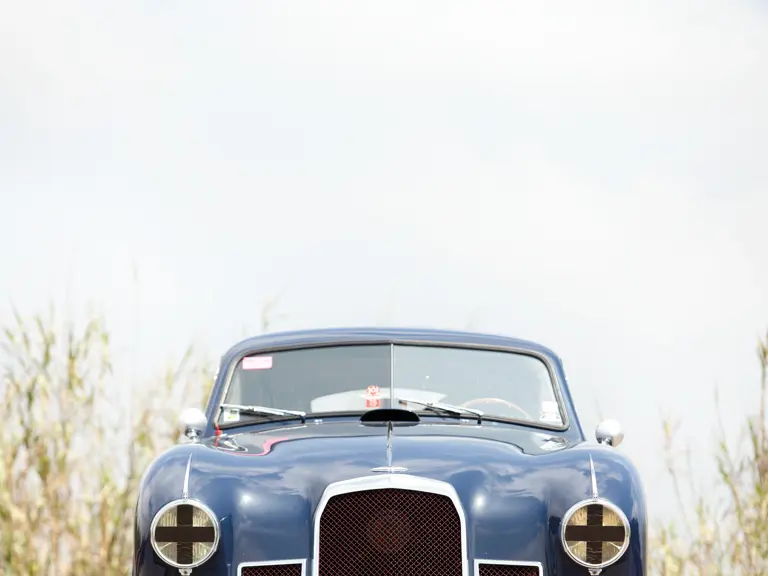

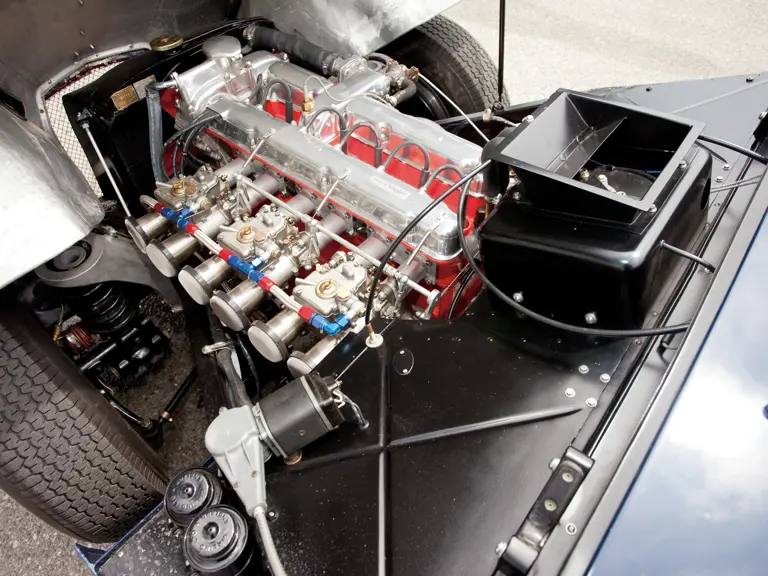
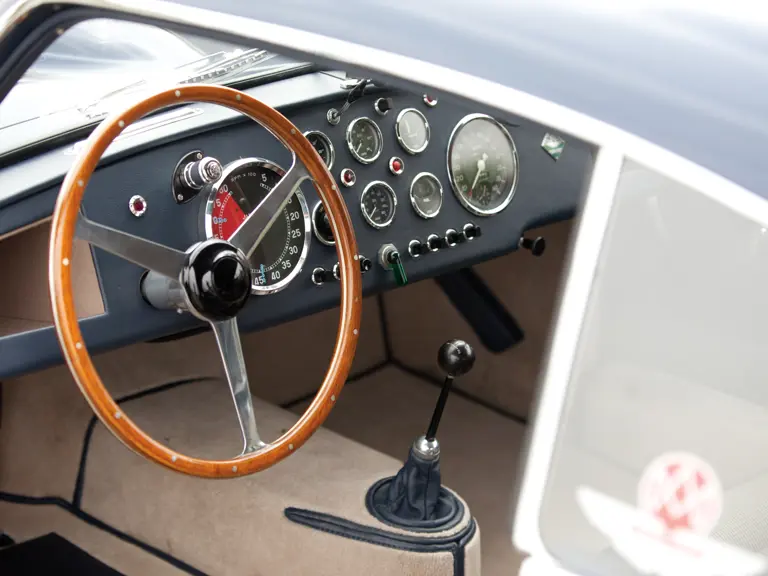

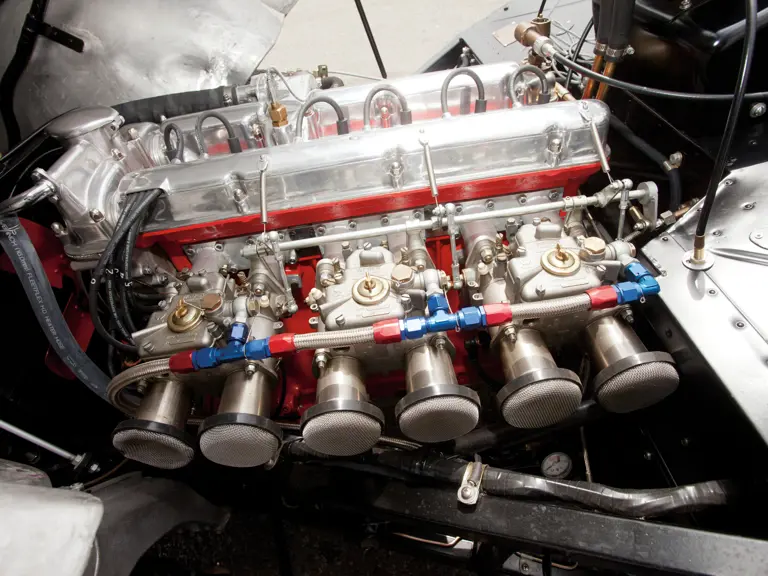
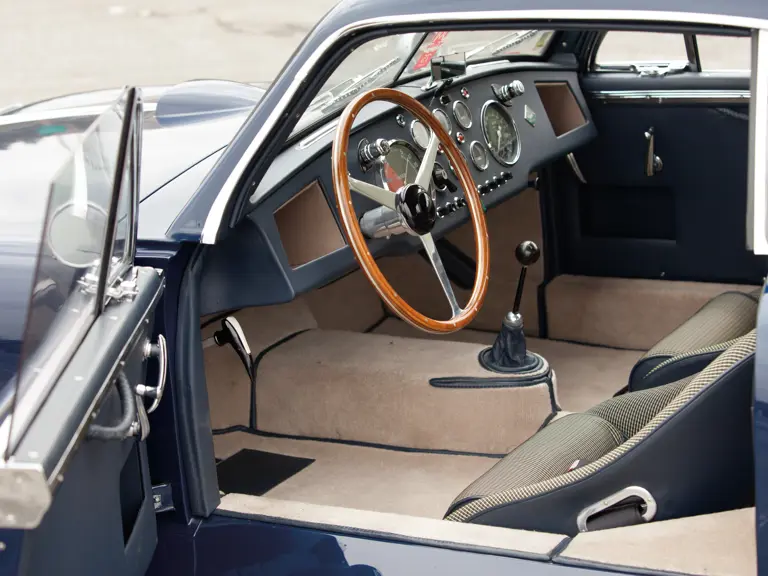
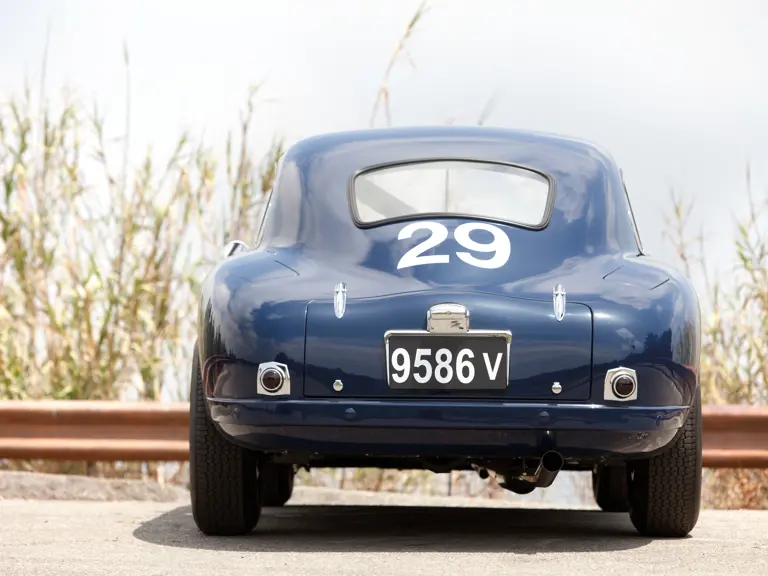

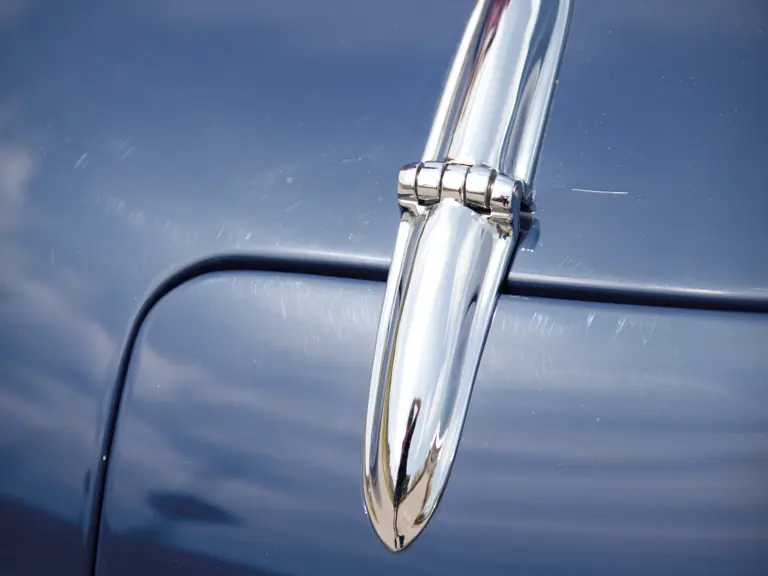

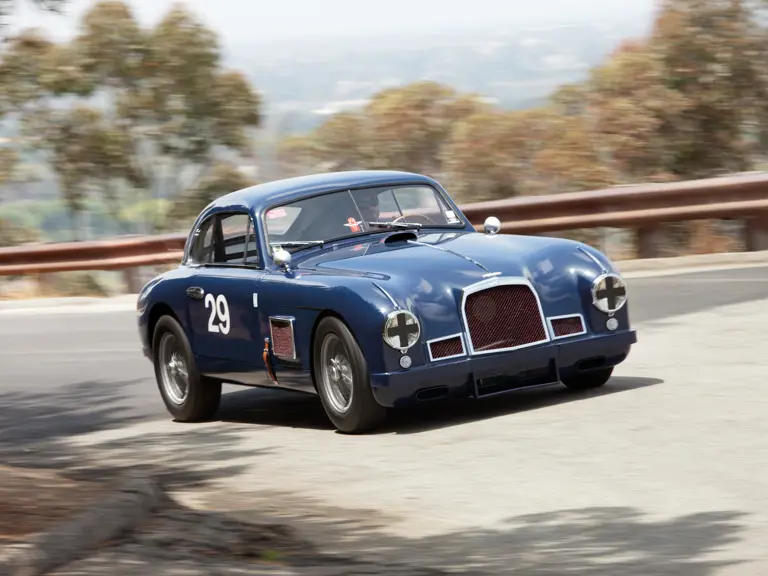
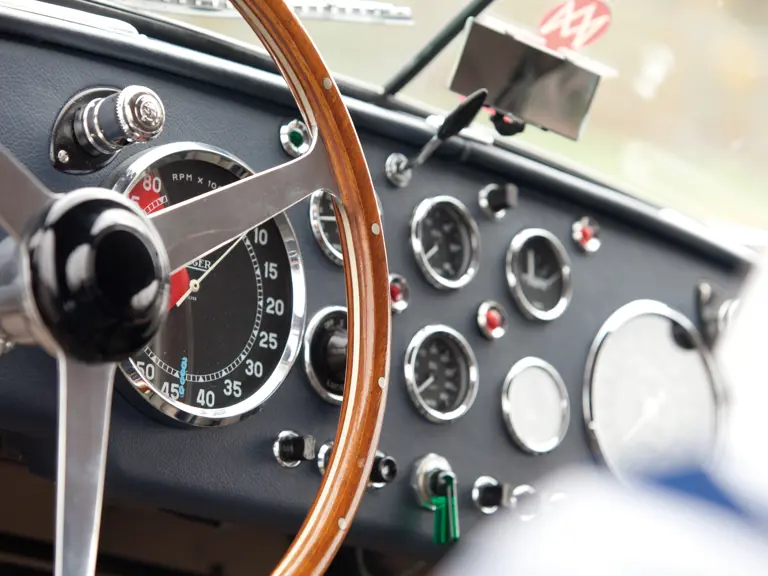

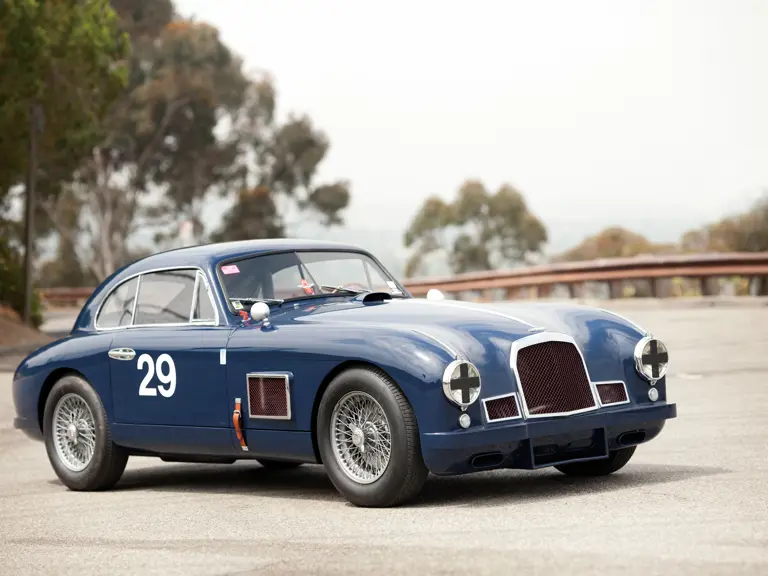



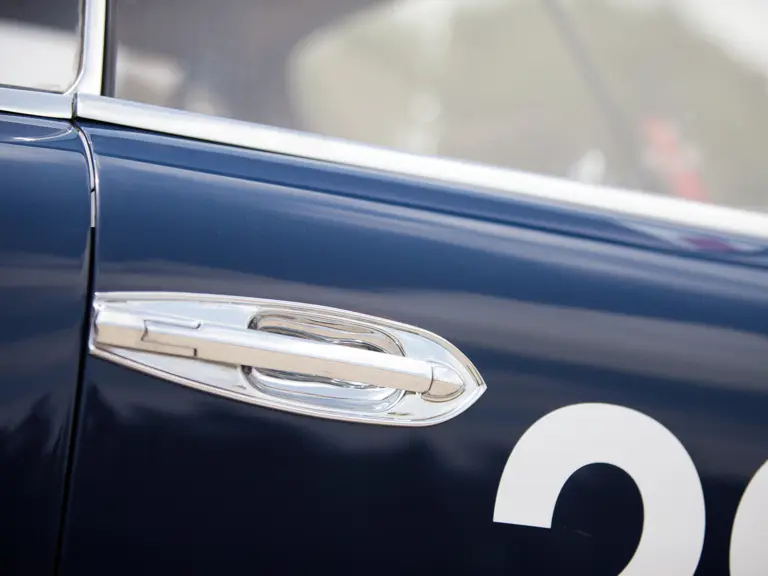
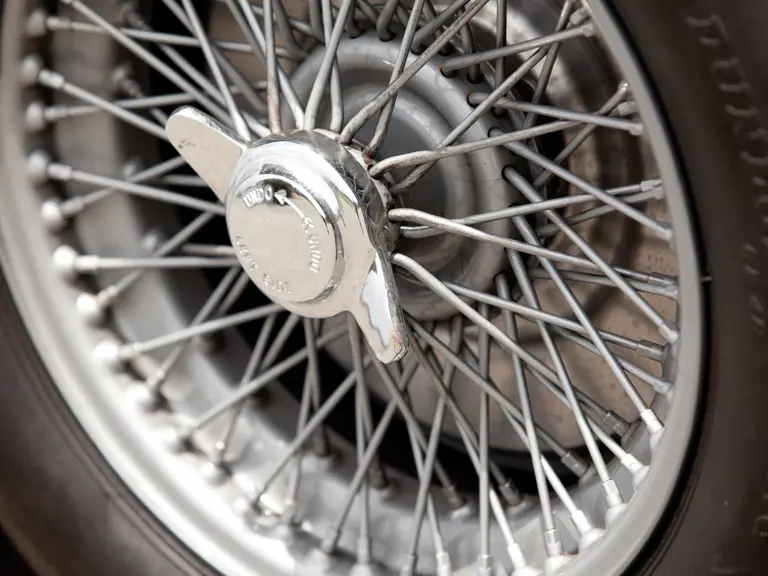
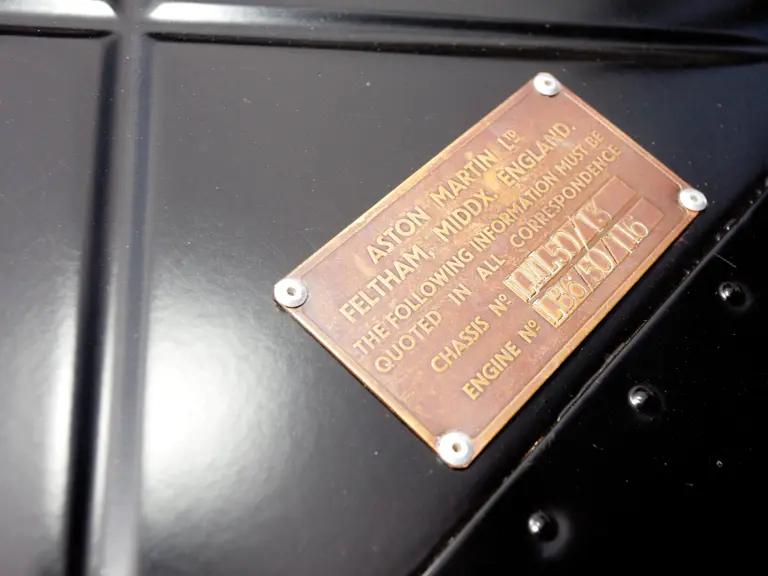

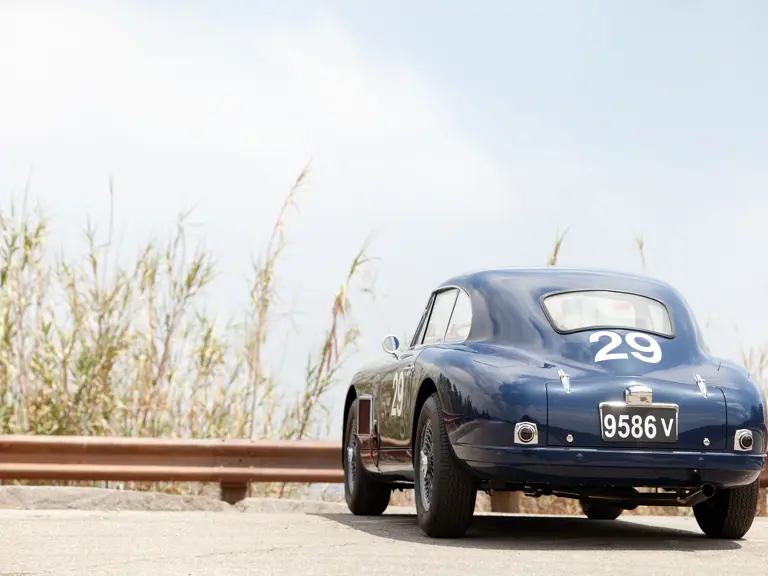
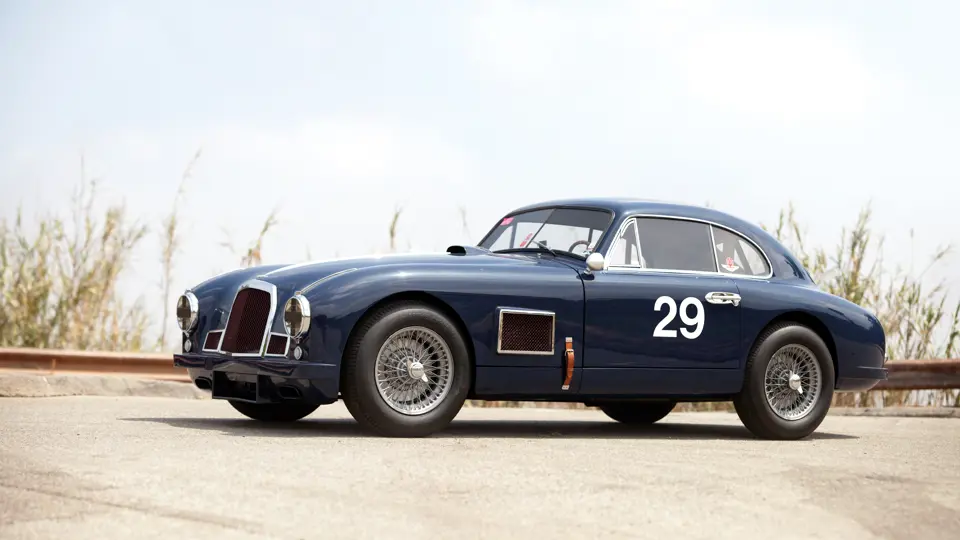
 | Monterey, California
| Monterey, California
